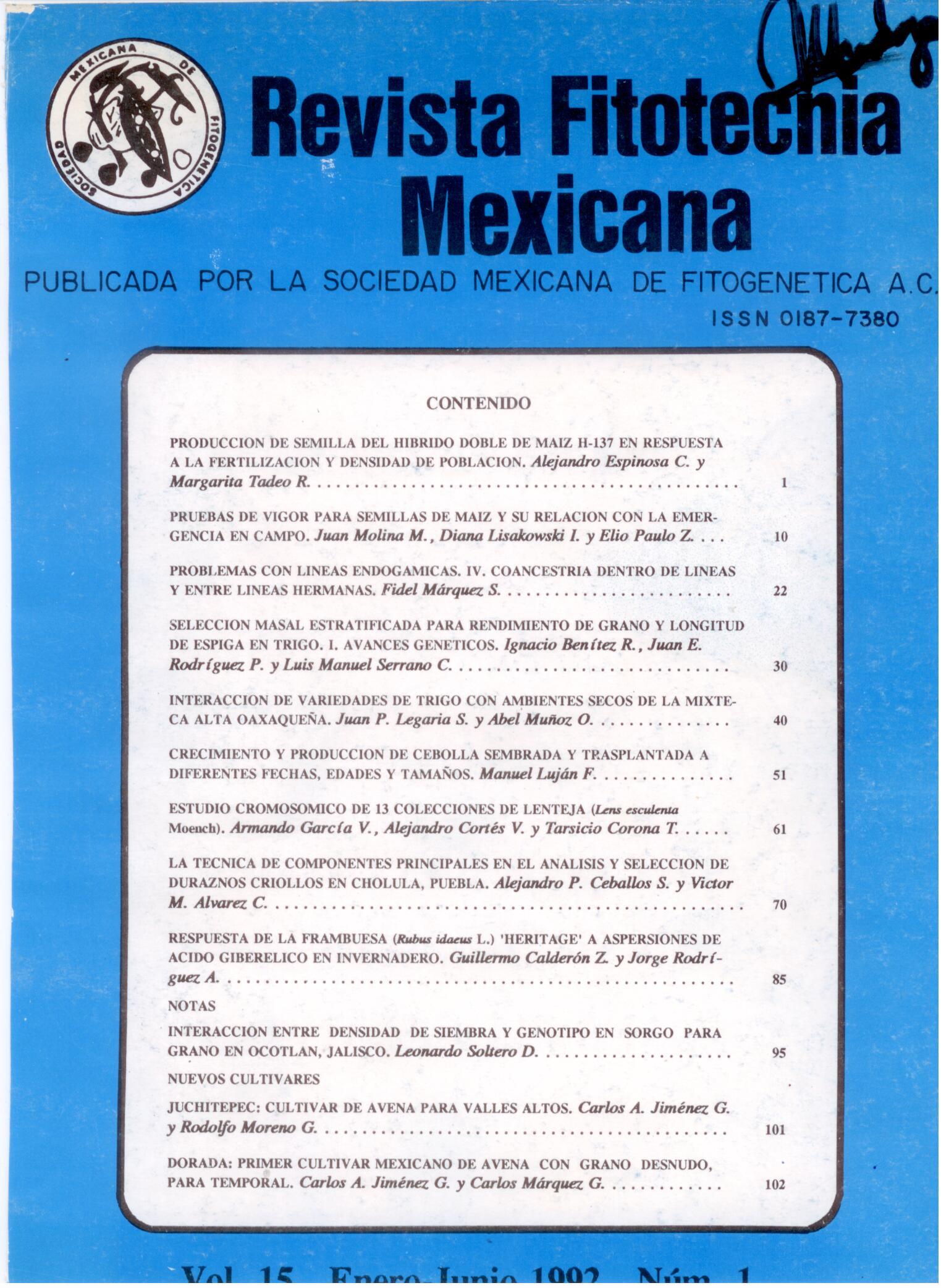SEED PRODUCTION OF THE DOUBLE HYBRID OF CORN H-137 IN RESPONSE TO FERTILIZATION AND POPULATION DENSITY
Main Article Content
Abstract
H-137 is a double cross com (Zea mays L.) commercial hybrid, that was released in 1990 by INIFAP, and is adapted to irrigated environments in Mexican Highlands (altitudes of 2200-2500 m). For a higher and faster seed production of this hybrid, and also to determine the possible effects on productivity and coincidence in flowering, the two single parental crosses (M17 x M18 and M36 x M37) were evaluated under three fertilization rates ( 160-70-30,00-150-00 and 300-00-00) and four population densities (45, 60, 75 and 80 thousand plants ha-1). This study was carried out during the spring-summer season of 1989 al the Valle de México Experimental Station. A complete randomized block design with three replications was used. The experiment was established on April 26. No statistical differences in grain yield were found among 60, 75 and 80 thousand plants ha-1, but these three densities yielded more than 45 thousand plants ha-1. The single cross M17 x Ml8 outyielded M36 x M37 in 1447 kg ha-1 for total seed and in 2692 kg ha-1 for commercial seed yield; in addition, M17 x M18 had higher values of the weight/volume ratio and weight of 200 seeds. Thus, it is confirmed that this cross should be used as the female in the double cross hybrid seed production plots. Results also showed that the appropriate plant population for high yield and good seed quality for both parents is 60 thousand plants ha-1. Flowering was not affected by the population densities nor by the fertilization rates.

